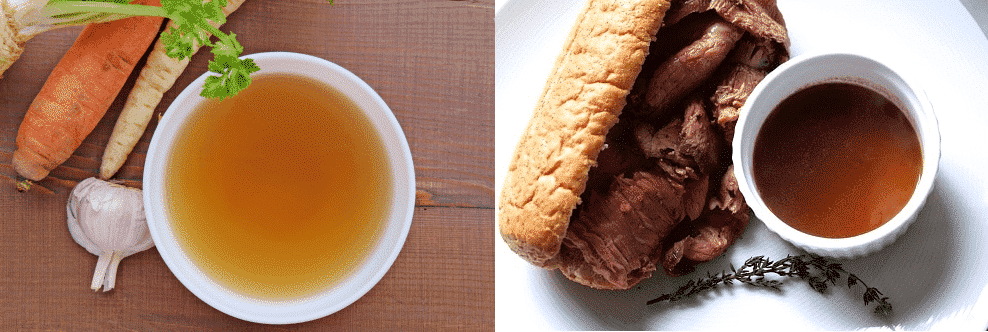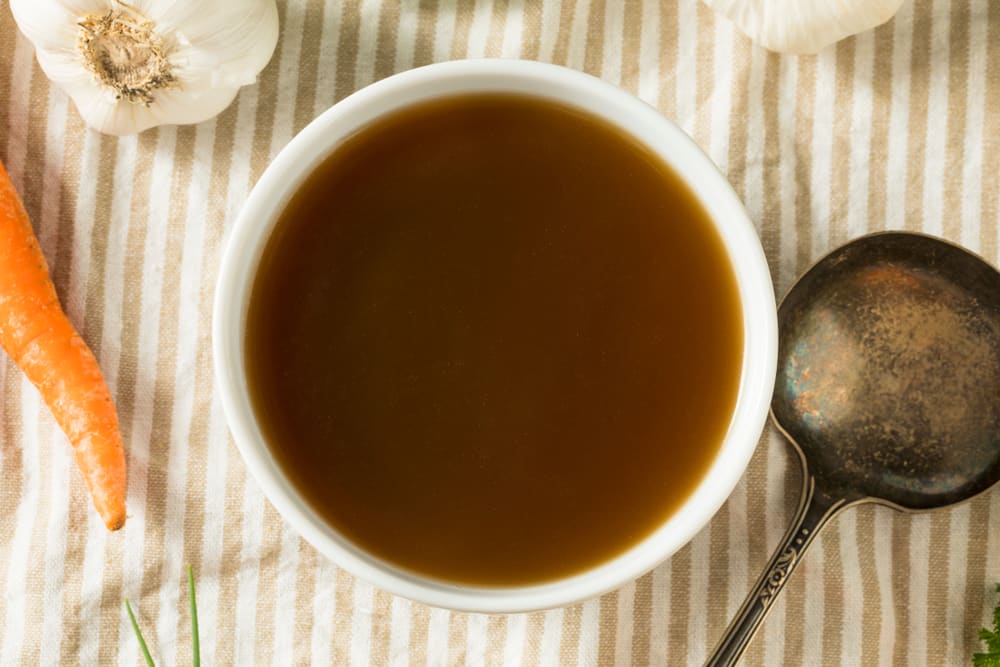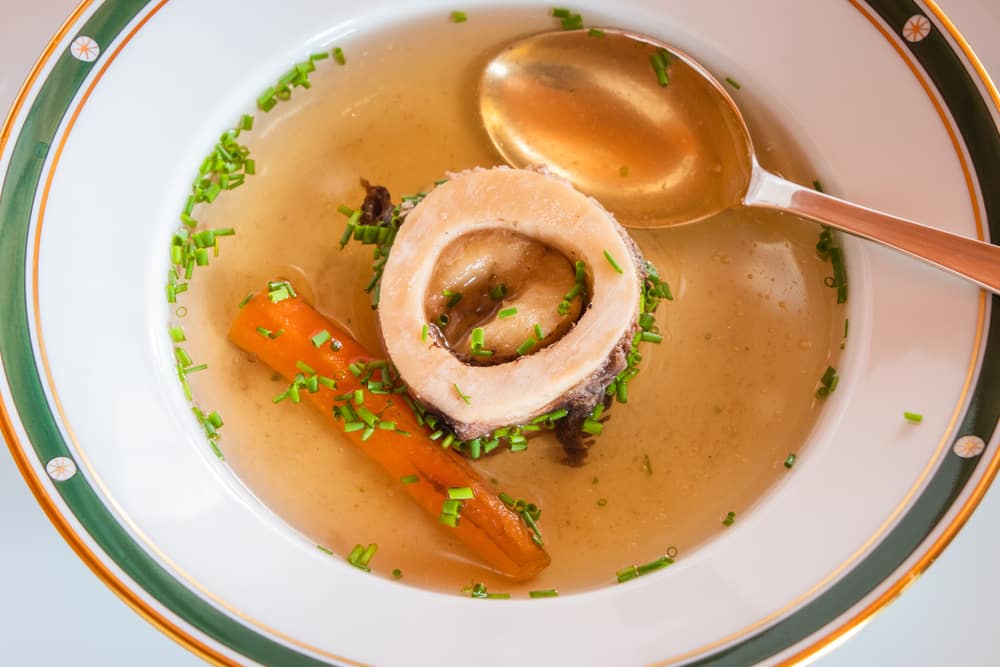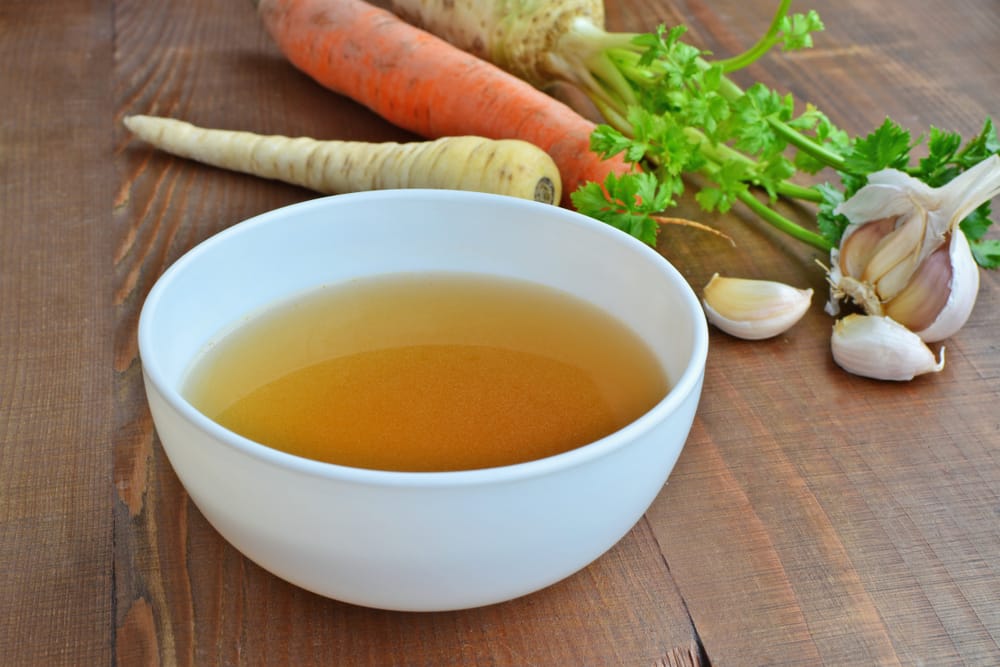
DISCLOSURE: This post may contain affiliate links, meaning when you click the links and make a purchase, I receive a commission. As an Amazon Associate I earn from qualifying purchases.
This is a bit of a trick question because au jus isn’t really a thing. It’s a way of serving beef. The definition of beef au jus is “served in the natural juices that come out of the meat while it is cooking.”
However, beef consommé is a thing – it’s a clarified (clear) beef broth that is usually served as a course on its own as a kind of soup. Let’s look at au jus first.
[amazon box=”B006K3PJ48″]
[amazon box=”B007S7OONW”]
Is Beef Consomme The Same As Au Jus?
Beef Au Jus
So, we’re talking here about beef “with juice”. Au jus will usually be found with a prime rib roast or a French dip. French dip is a sub-type sandwich filled with beef and served with a jus to dip it in.
Beef jus is different from gravy because it is not thickened and there are few flavorings added to it. It is the pure, unadulterated meat juices served with the meat or as a dipping sauce.
Beef consommé is a rich, flavorful, clear broth made in a very specific way. It is served as a soup course or light meal and has been known since the Middle Ages.
The term consommé in French means completed and refers to the process whereby the end result of the process is a clear, concentrated broth.
Consommé was traditionally eaten by the wealthy as only they could afford to throw away the meat and vegetables in the dish at the end of the process.
An acidic vegetable like tomato is usually added because the acid helps the proteins to coagulate. If the waste factor concerns you, leave the eggshells out of your raft mixture and use the leftover raft as pet food.
Beef consommé is made by following a very specific technique to yield a clear, silky liquid with no impurities in it. The cook mixes finely cut-up beef, egg whites, crushed eggshells, and root vegetables.
These form what is known as a raft. This raft is simmered gently on very low heat in a pot of veal broth. The key is not to stir or disturb the mixture in any way while it is cooking.
The raft floats on the surface of the liquid and any solid particles stick to it, leaving a clear consommé or broth underneath. The broth becomes infused with the flavor of whatever is in the raft.
Normally a lean cut of beef is used because any fat will need to be skimmed off before serving. Sirloin or shank are good options as they are full of flavor but are not fatty cuts.
Bonus Recipe
We’ve included a recipe for you to make your own rich beef consommé. It’s easy and just requires good quality ingredients and a little patience. Have fun and we hope you enjoy the final product!
Ingredients:
- 1 tablespoon freshly ground black pepper
- 2 teaspoons sea salt
- 4 egg whites and the shells if using
- 2 Roma tomatoes, chopped
- 3 celery sticks, chopped
- 1 large carrot, chopped
- 1 onion, chopped
- ½ pound minced beef sirloin or shank
- 4 cups veal or beef stock
- 2 thyme sprigs
- A few parsley stalks, chopped
- 2 whole cloves
- 1 bay leaf
Instructions:
1. The stock you begin with must be concentrated, skimmed of fat, and cold.
2. Using a big bowl, whisk the egg whites and shells together until they are foamy. Set aside.
3. In a food processor, pulse the tomatoes, celery, carrot, onion, and ground beef. Pulse until the ingredients are just mixed.
4. Using a big soup pot, put in the beef mixture, the egg mixture, and the stock. Add the thyme, parsley, cloves and bay leaf. Whisk everything together well.
5. Bring it all to a boil, stirring constantly. The solids will form a raft on top.
6. Reduce the heat and simmer the mixture gently for about one and a half hours. Do not stir or move the raft or your consommé will become cloudy.
7. Remove the pot from the heat and strain the consommé through a fine sieve lined with muslin. Throw away the solid part.
8. Taste for seasoning. Reheat and serve hot.
9. This will keep in the fridge for up to 3 days or it can be frozen for 3 months.


